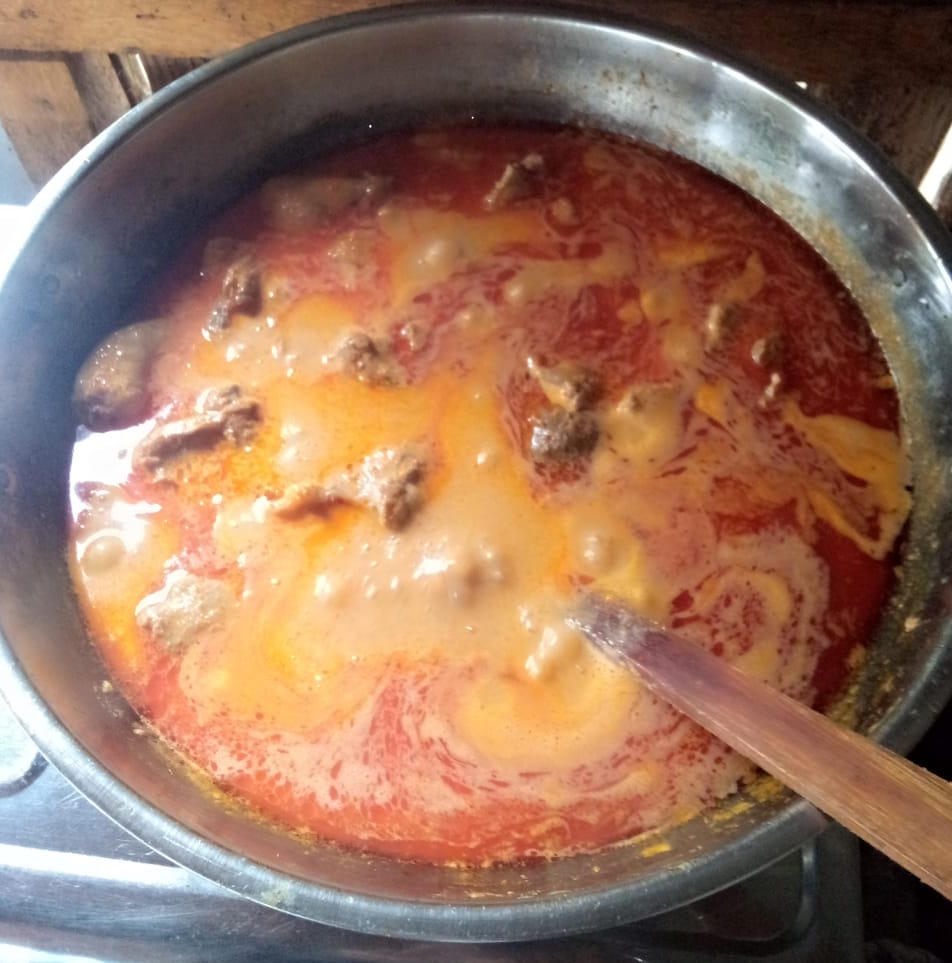The Participant Observer Recipe of the Month is for Japanese Agedashi Tofu, an easy-to-make, nutritious snack which can also be enjoyed as a side-dish or even a main course. It is light and delicious!
![]()
Agedashi Tofu (揚げ出し豆腐) is a wonderful Japanese dish that is quick and easy to make and is perfect for a light snack or appetizer. In Japan it can be enjoyed at home, in restaurants, and in izakaya (居酒屋) pubs. The dish has a long history and mention is made of it in the book Tofu Hyakuchin which was published in 1782.
Agedashi is typically fried in a deep fat fryer, and, if you have one set up, this is undoubtedly the best way to prepare it. But if you don't mind turning the tofu over and over (a cube has six sides!), pan frying is an option. If you fill the pan a little bit less than 1/2-inch with oil you only have to turn the cubes once! Air-frying is also an option, but you should brush or spray the floured tofu with oil, before placing them in the air fryer. We tried air-frying without oil and the tofu did not brown.
The Japanese method is to use potato starch (and we did), but apparently corn starch works almost as well. Japanese markets, such as Mitsua Market, carry potato starch. Alternative brands such "Bob's Red Mill" (Vons) or Manischewitz (Ralphs) are other options. The base for the broth, Awase Dashi, is made from kelp (Konbu) and bonito fish flakes (kastuobushi) and comes in a variety of forms including pre-made in a bottle, powder form, in the form of a "tea-bag", or you can make your own with the recipe below. Some recipes suggest chicken stock as an alternative, but perhaps this should be only substituted in an emergency, like during a Zombie Apocalypse. There are other types of dashi broth—some are even vegan—but Awase Dashi is the standard choice for this recipe. Instructions for making dashi sometimes suggest "cold brewing" the konbu (seaweed) for several hours before bringing the broth water to a boil and adding the fish flakes (katsuobushi). This is because, it is claimed that the boiling the konbu will thicken the broth, but we did not experience this effect.
Ingredients:
- 1 package of firm tofu (about 14 oz)
- 1 cup of potato starch (or corn starch)
- 1 cup of dashi sauce (or make your own with directions below)
- 2 tablespoons of Mirin
- 2 tablespoons of Soy Sauce
- 1/2 cup of scallions (green onions) sliced thin (for garnish)
- 1/2 cup of grated daikon (for garnish)
- Beni Shoga (red pickled ginger) 紅生姜 (for garnish)
Preparation:
- Drain and then dry the tofu with cloth towel or paper towel.
- Cut the tofu into 1-ince cubes.
- Pour the oil in a frying pan and heat to 300°F (medium high).
- Put the potato or corn starch in a shallow bowl or open container.
- Coat each cube of tofu in the potato starch and shake off excess starch.
- Fry the tofu cubes in the oil until golden brown, turning the cubes to brown on all sides.
- Remove from the oil and drain on paper towels.
- In a separate saucepan, heat the dashi, Mirin, and soy sauce.
- Place the fried tofu cubes in separate bowls and pour the hot broth over them.
- Garnish with sliced scallions, grated daikon, and Beni Shoga if desired.
Dashi:
Ingredients:
- 1 quart of water
- 1/2 once of Konbu seaweed
- 1/2 once of Katsuobushi fish flakes
Preparation:
- Boil the Konbu piece(s) in the water for 5 minutes.
- Remove the pot from the stove and mix in the Katsuobushi fish flakes.
- Let stand for 5 minutes and then strain with a very fine strainer.
Itadakimasu!
Recipe and photos by T. Johnston-O'Neill









